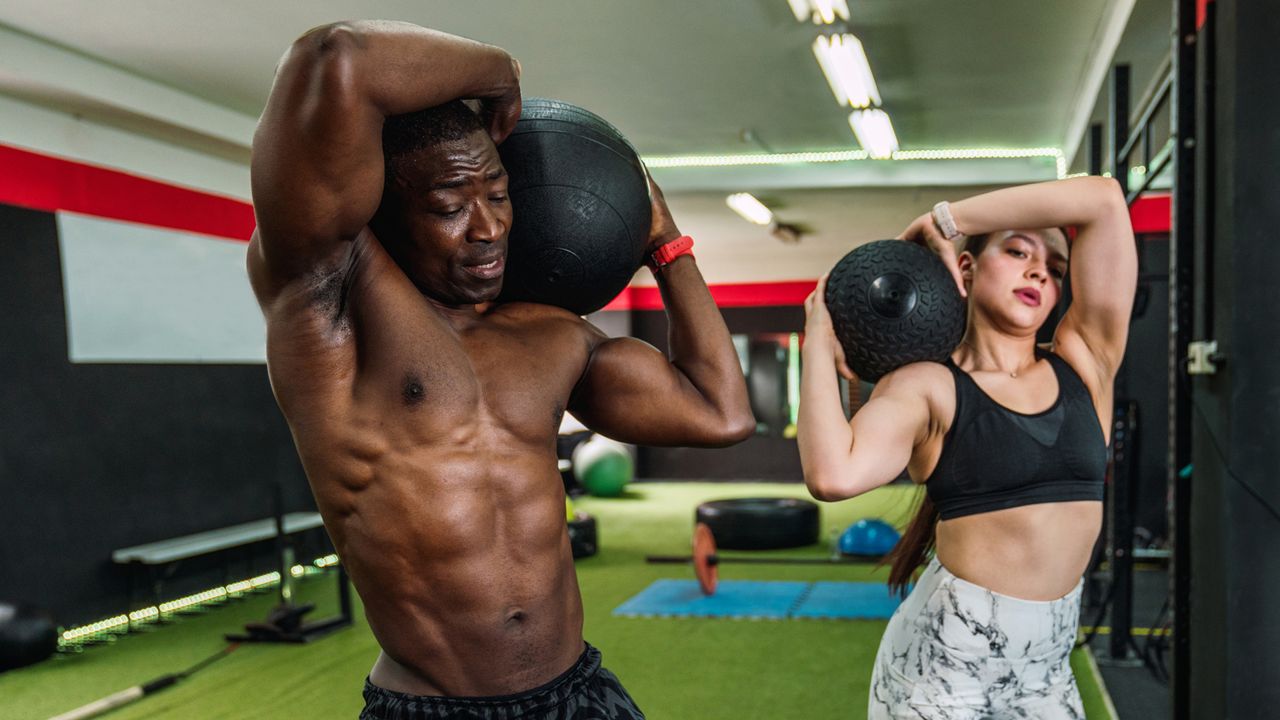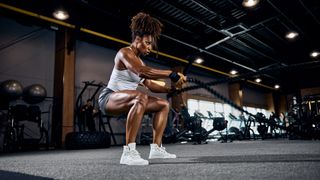ActiveShould women and men train and eat differently?Fitness expert Vic Coppin shares the essential differences men and women face when working outWhen you purchase through links on our site, we may earn an affiliate commission.Here’s how it works.
ActiveShould women and men train and eat differently?Fitness expert Vic Coppin shares the essential differences men and women face when working outWhen you purchase through links on our site, we may earn an affiliate commission.Here’s how it works.
Fitness expert Vic Coppin shares the essential differences men and women face when working out
When you purchase through links on our site, we may earn an affiliate commission.Here’s how it works.
(Image credit: Getty Images)

(Image credit: Getty Images)
Is there a point in women and men training differently? After all, exercises such as the deadlift will work the same muscles in both women in men. However, there are key physiological differences that, when taken into account, can help optimise training for both sexes.
We askedMuscle Foodexpert nutritionist Vic Coppin to share her invaluable insights about the differences men and women face when approaching fitness and nutrition. She says, “When we look at an anatomical and physiological level, there are some key differences that may have a bearing on our training and nutrition, including bone and muscle differences, our metabolisms and our hormones.”
Below, Vic outlines the three key differences and provides tips on overcoming the most significant hurdles women face when training around hormonal cycles, physiology and more.
1. Bone and muscle
“While men typically have a larger skeleton and more muscle, women will have more muscle mass and strength in their lower body than their upper body, so their relative lower body strength may be greater”, Vic suggests.
In fact, the largest muscle in the body is the gluteus maximus, located at the back of the hip. Other large muscle groups located under the hip line are the quadriceps – the four muscles making up the front of your thighs – and the hamstrings (the back of the thighs). These can exert significant force, help stabilise the body and improve posture.
On the other hand, as we age, women are prone to increased muscle mass decline – a condition called sarcopenia – compared to men. Women tend to experience reduced or decreased bone mineral density – osteoporosis – at a younger age. Hence why resistance training is so necessary for women; it can improve joint health and improve metabolism.
(Image credit: Getty Images)

(Image credit: Getty Images)
2. Metabolism
When it comes to our metabolisms, there are some key differences:
Sign up to the T3 newsletter for smarter living straight to your inbox
Get all the latest news, reviews, deals and buying guides on gorgeous tech, home and active products from the T3 experts
Women typically have a lower Basal Metabolic Rate (BMR) than a man of equivalent weight and height. This means women might need fewer calories to maintain bodyweight and should be careful when planning meal plans to support their training efforts.
“This doesn’t, and shouldn’t, be interpreted to mean that women will always need to eat less than men - this is a problematic stigma”, Vic says, “This assumption can mean that active women who have increased energy demands will very often shy away from eating the calories they need, so it’s important to contextualise our own lifestyles.”
3. Hormones
It’s no secret that women have to navigate several physiological factors that men don’t. “For most of us, this means managing our menstrual cycle from our teenage years through adulthood, possibly encountering pregnancies and leading right up to peri-menopause and menopause”, Vic explains, “Many also have to manage conditions such as Polycystic Ovary Syndrome (PCOS), which affects between 6-21% of women (dependent on diagnostic criteria), endometriosis.”
This is why women often have different needs for vitamins and minerals than men.
“Research shows there may be some advantages in particular training styles and highlights the types of ‘stresses’ women may be able to tolerate better than men”, Vic adds, “For most people embarking on exercise or training, this level of detail really won’t need to come into consideration and certainly shouldn’t overshadow the person’s individual preferences, goals and lifestyle.
(Image credit: Getty Images)

(Image credit: Getty Images)
Should men and women be training differently?
While physiological and psychological factors should be taken into consideration, how you approach your training and nutrition should always centre around your own goals and ambitions and your lifestyle factors (time, family, work, sleep, stress), not whether you’re male or female.
“It’s important that we look at ourselves as individuals and not get wrapped up in some of those fine details which could trip us up”, Vis says, “Some women will be in a position where they need to eat far more calories than some men, depending on their goals and lifestyle.”
“Some women may never need to make changes to their training and nutrition to coincide with their menstrual cycle, while others will have to build greater awareness of how their cycle impacts their progress, and this can empower them to adapt accordingly”, she concludes.

DJI Flip review: The ultimate beginner drone with pro-level performanceDJI Flip combines stunning 4K video, smart AI tracking, and extended flight time in a lightweight, beginner-friendly drone
DJI Flip combines stunning 4K video, smart AI tracking, and extended flight time in a lightweight, beginner-friendly drone

DJI Flip vs DJI Neo: which is the ultimate beginner drone?Does the Flip overshadow the smaller Neo, or are you better off giving it a miss?
Does the Flip overshadow the smaller Neo, or are you better off giving it a miss?